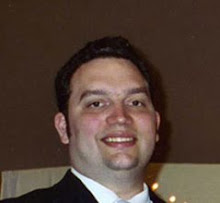
I was born to late to have enjoyed
Alex Raymond's strips in the newspapers, but came across him as a major influence to the artists that I aspire to be like (namely
Al Williamson). Once I discovered his work I would search high and low for books about the master sequential artist, who inspired so many who followed. I studied the reproductions I could find and the images on the Internet trying to unlock the secrets that they held. What I discovered (to paraphrase Idol's Randy Jackson) if you can draw you can draw anything. Alex Raymond could. It did not matter if it was a space faring adventure, a super spy, big game hunter, or detective. Raymond could draw them all with equal elegance. It was the
Rip Kirby strips that I felt was the pinnacle of his work, and that is where I focused my study. From these strips I learned the importance of well placed black areas, know what to draw and what to imply, and what you do draw, draw it well.
Raymond liked to refer to his spotting of blacks has pools of quiet, because they gave areas for your eyes to rest while taking in the story. If you compare his Rip Kirby strip to his earlier
Flash Gordon work you can see a shift in how he utilizes his black area. The Flash Gordon strips were busy with hatching, while the Rip Kirby strips were a more refine work where there was hardly a wasted line. Each line served a purpose and each area of black helped balance the strip has a whole. It is this idea that I have tried to incorporate into my work as a sequential artist. Always mindful of choices of spotting my blacks and trying to not over render my work.
Raymond's seemingly innate ability to know just how much was needed to depict a scene, still astounds me. He knew how to make a panel have a sense of place by just drawing a few lines and a few background props like a simple light shade. Raymond knew how to cartoon with out it looking cartoony. In other words, he knew how to simplify without abstracting his figures to the point that they no longer looked like real people but animation characters (
we can debate the merits of both in a later post). This is an area that I am continually trying to find that perfect balance of what to show and what to leave out, but somehow Raymond just understood that balance.

Even though he simplified what he drew, he always drew it well. This is probably one of the biggest lessons I have learned from his work. Make sure what you draw you draw it well. If you have to go find a reference to draw it correctly. Go and find it. It will make all of the difference. If you try and fake it it will look fake, and distract the reader from the story you are trying to tell. Raymond often used models and it shows in his work. Most of us can not afford models, but the Internet is a rich resource and easily accessible to us, so there is no excuse not to find some sort of reference (
I'll try and do a post about how to properly use reference in your sequential work soon).
Alex Raymond was a master to masters. His work has inspired generations and shaped the world of sequential art. His work is a high water mark for the art form, and holds countless lessons for the aspiring sequential artist. Alex, you died too soon.
-Anthony Summey


 I was born to late to have enjoyed
I was born to late to have enjoyed 
















